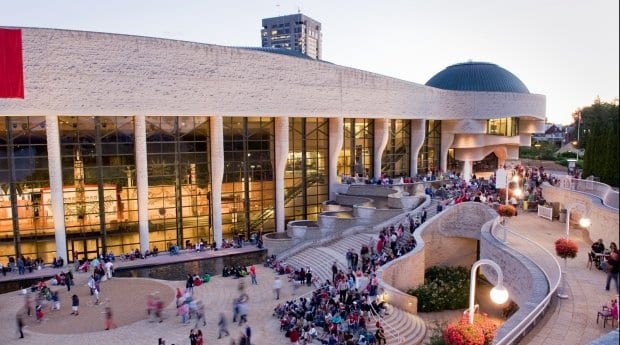The Canadian Museum of History announced a formal partnership with the Canadian Lesbian and Gay Archives (CLGA) June 18 to include gay Canadian history in a newly renovated and expanded Canadian History Hall, set to open on Canada’s 150th birthday, on July 1, 2017.
The $30-million renovation, of which $25 million comes from the federal government and another $5 million will be raised by donations, will be the first major overhaul of the exhibit since the museum opened in Gatineau in 1989 as the Canadian Museum of Civilization.
The centrepiece of the museum, the History Hall, is now incomplete and offers an outdated version of Canadian history, says Mark O’Neill, president and CEO of the Canadian Museum of History.
“It begins with the arrival of the Vikings and it ends in 1970 with an exhibit that’s meant to look at immigration and the modernization of the country,” he says. “Apart from New France, there’s nothing on French Canada or Quebec. There’s no women’s history. Many important themes and events in Canadian history are poorly covered or not covered at all.”
The new and expanded hall will take up 44,000 square feet over two floors — a size O’Neill says is larger than most museums in Canada. It will aim to cover the breadth of Canadian history, from original First Nations societies to the diverse and multicultural country of today.
The museum consulted with other museums, institutions and the public to determine what aspects of the Canadian story needed to be included. The CLGA is one of many institutions and organizations across the country partnering with the museum to help fill in gaps in the story.
“We don’t have all the resources and the knowledge in Canada about complex historical issues, and many other institutions do, so we’re reaching out to partner with them,” O’Neill says. “These collaborative arrangements are really important for us in developing exhibition content. The CLGA is going to have exhibition material that we don’t have, that we hope to be able to borrow and build upon, to present this issue in a meaningful way to our visitors.”
While the museum hasn’t yet figured out how gay history will be incorporated into Canada’s story, O’Neill says he wants the new exhibit to be as inclusive as possible, including stories of the full spectrum of the “LGBTQ+” community and reflecting queer lives in different parts of Canada.
“We would be very interested in examining different lenses that would be applied to those issues,” he says. “When you look at the equality issues that were dealt with from the ’70s on to current day, it was an era of profound development of social policy in terms of human rights for a number of equality-seeking groups, so we don’t know how we’re going to present it, but we know that the struggle for equality by gays and lesbians has to be part of that story.”


 Why you can trust Xtra
Why you can trust Xtra


